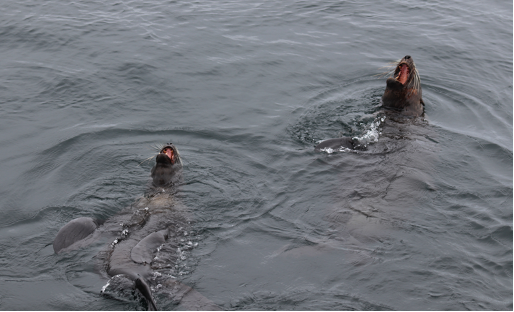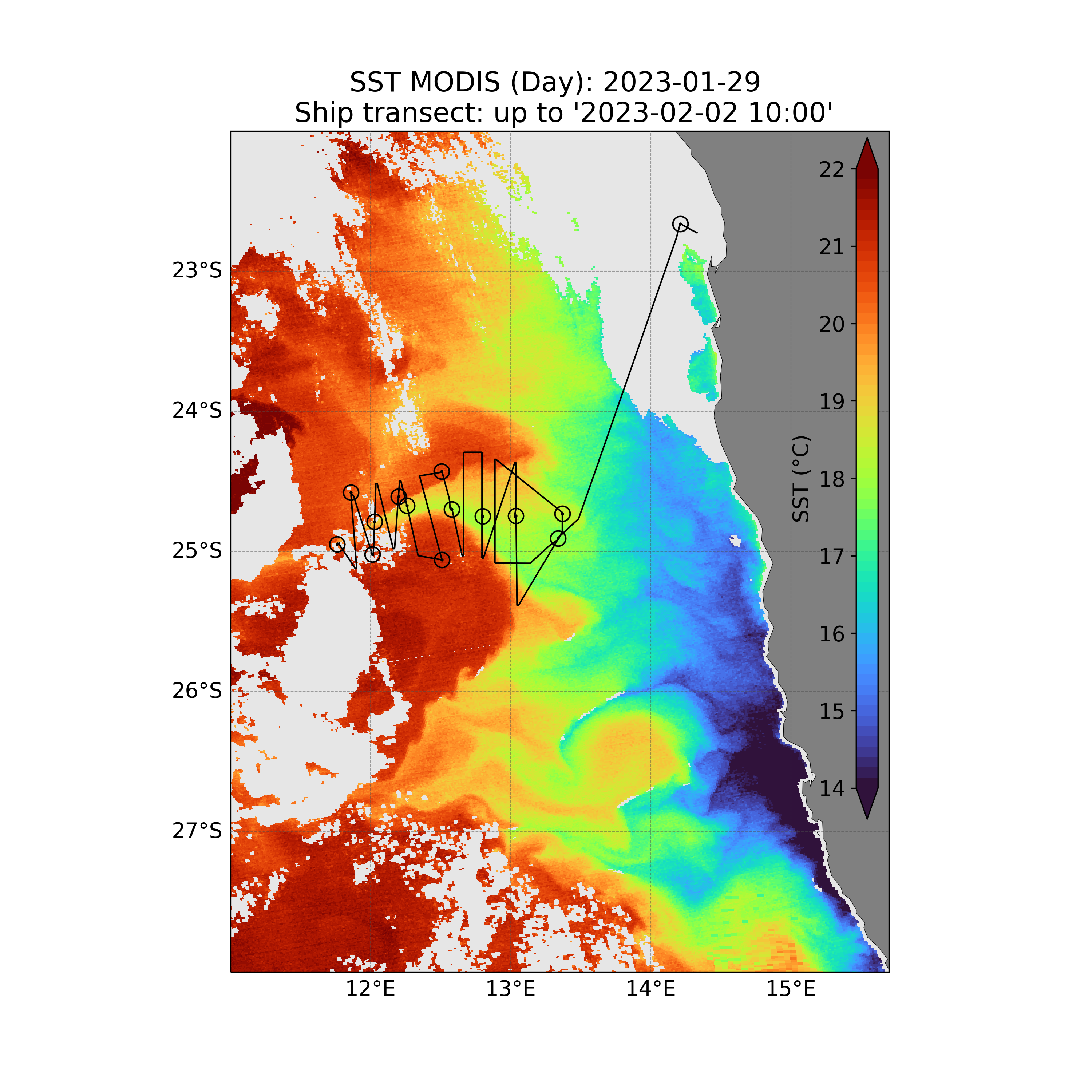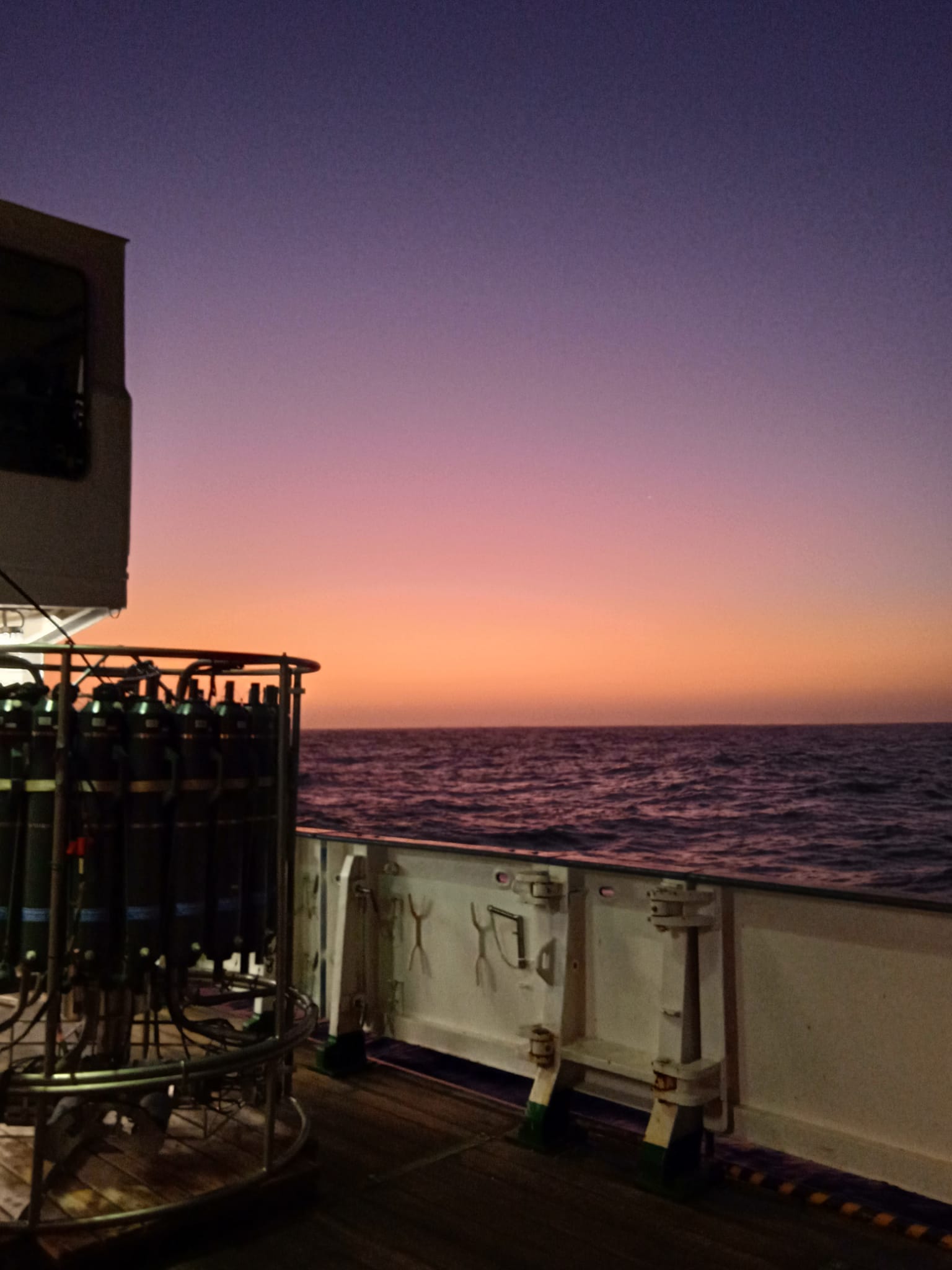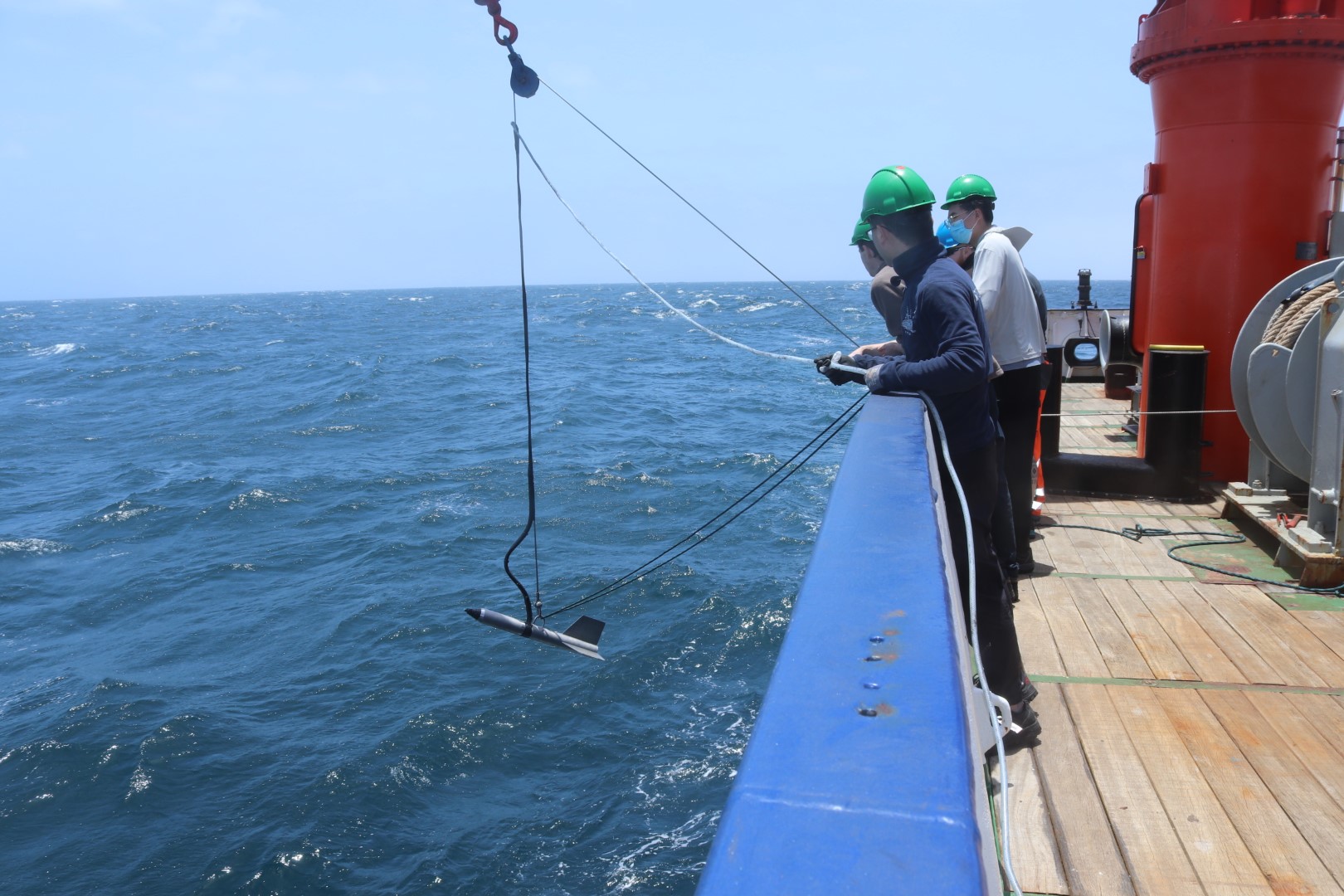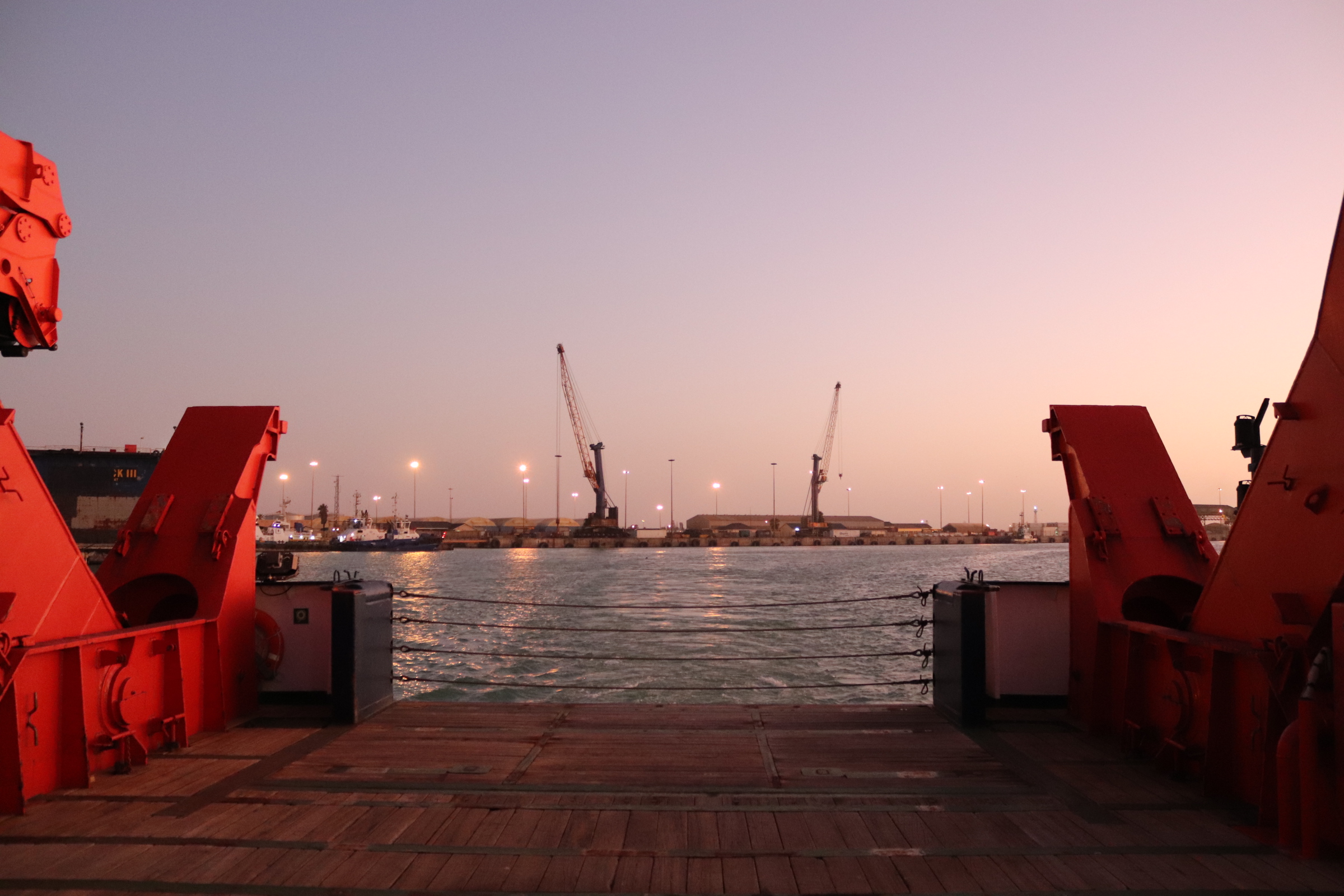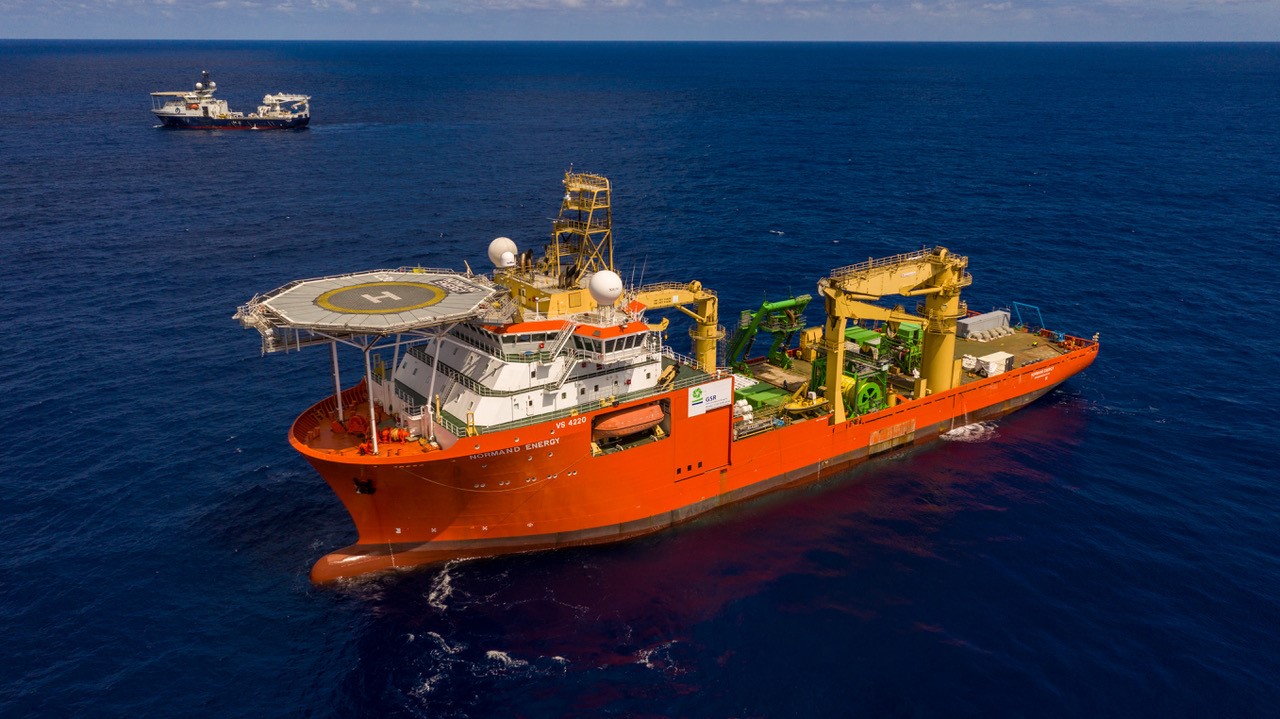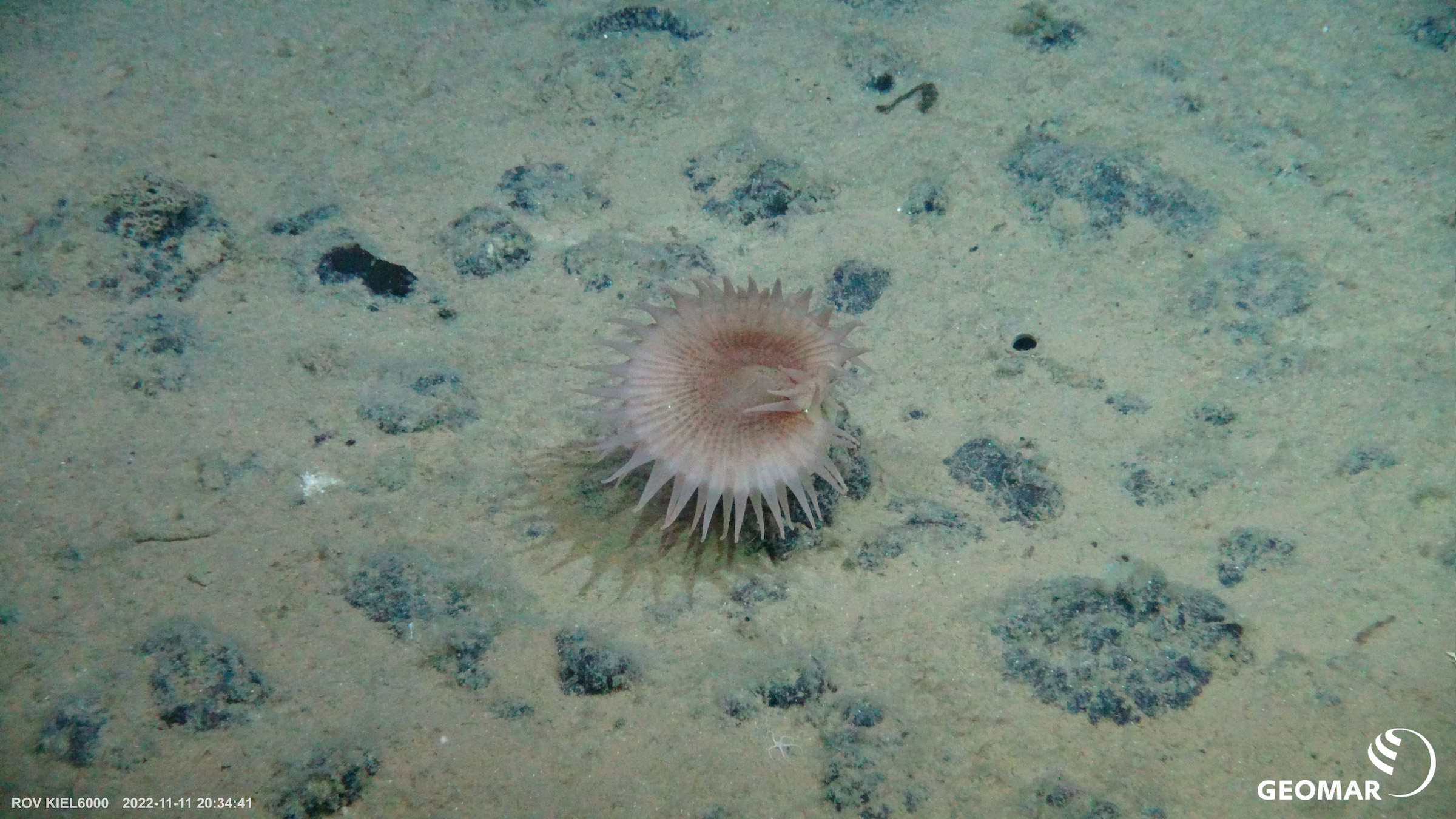3rd weekly report (05.02.2023 – 11.02.2023) Saturday 11th February 2023 The start of the week began in Walvis Bay port as we waited for a replacement crew member to arrive. The scientists used the time to organize their labs and catch up with paperwork. We also had science seminars each day where initial results from […]
Tracking the biogeochemical evolution of an ocean filament
+++ deutsche Version siehe unten+++ 2nd weekly report (29.01.2023 – 04.02.2023) Monday 6th February 2023 The second week of the research cruise M187 started with continued observation of the first targeted filament located around 24–25 °S. This filament has been a major and persistent feature in satellite images over the last few weeks, extending more […]
Sampling the water column in the South East Atlantic
The CTD (short for Conductivity-Temperature-Depth) is a central instrument for most oceanic research. It infers the salinity from conductivity and measures, in addition to temperature and depth, oxygen, florescence and much more! Furthermore, it has 24 big bottles (10 L) attached to it, allowing for water collection from specific depths, which then in turn can […]
Hunting for ocean filaments in the South Atlantic
1st weekly report (25.01.2023 – 28.01.2023) Sunday 29th January 2023 On Wednesday 25th January we left the port of Walvis Bay in Namibia at 20:00 local time. This is the beginning of a 38-day cruise in the South East Atlantic, where we will study the physics, chemistry and biology of upwelled filaments. Using a wide […]
Departure for RV Meteor cruise M187 from Walvis Bay, Namibia
Thursday 26th January 2023 After an evening departure from Walvis Bay yesterday and a first ‘test’ station not far from the coast, we are now heading south, hunting for so-called filaments to track. The overarching aim of our research cruise is to investigate these features: elongated finger-shaped structures of cold seawater that penetrate outwards from […]
Numbers of the voyage – a little riddle (part 2)
Deutsche Version siehe unten Mirja Bardenhagen, Marine Resource Exploration – Federal Institute for Geosciences and Natural Resources in Hanover, Germany Hello, it’s Wilma again. And as promised with the answers. But first I would like to thank everyone who helped me to create the puzzle. Because of course I couldn’t be there for every photo […]
Dive No. 379
Deutsche Version siehe unten Marcel Rothenbeck, AUV Team – GEOMAR Helmholtz Centre for Ocean Research Kiel, Germany We have been at sea for 40 days now. As expected, all we see around the ship is water as far as the eye can see, and every now and then a group of red-footed boobies is flying […]
The International Seabed Authority
Deutsche Version siehe unten Carsten Rühlemann, Federal Institute for Geosciences and Natural Resources in Hannover, Germany I am working in the Marine Resource Exploration department at the Federal Institute for Geosciences and Natural Resources (Bundesanstalt für Geowissenschaften und Rohstoffe, BGR), Germany’s geological survey in Hannover. In 2004, the federal government led by the Social Democratic […]
Pioneering nodule mining: Some words on GSR and on what we are doing
Deutsche Version siehe unten Francois Charlet, Global Sea Mineral Resources, Belgium The transition to clean energy technology, the growing population and urbanization are requiring specific metals such as nickel, cobalt, manganese, and copper. Polymetallic nodules contain these metals in a significant quantity. Intuitively, going to the deep seafloor for these metals could make a lot […]
Restoring the deep sea after mining – would it work?
Deutsche Version siehe unten Sabine Gollner, Royal Netherlands Institute for Sea Research on Texel Many of earth’s ecosystems have undergone significant degradation in the past decades and protecting nature is the most effective tool to prevent further loss of biodiversity. On land and in shallow seas there is a growing recognization that we won’t be […]
